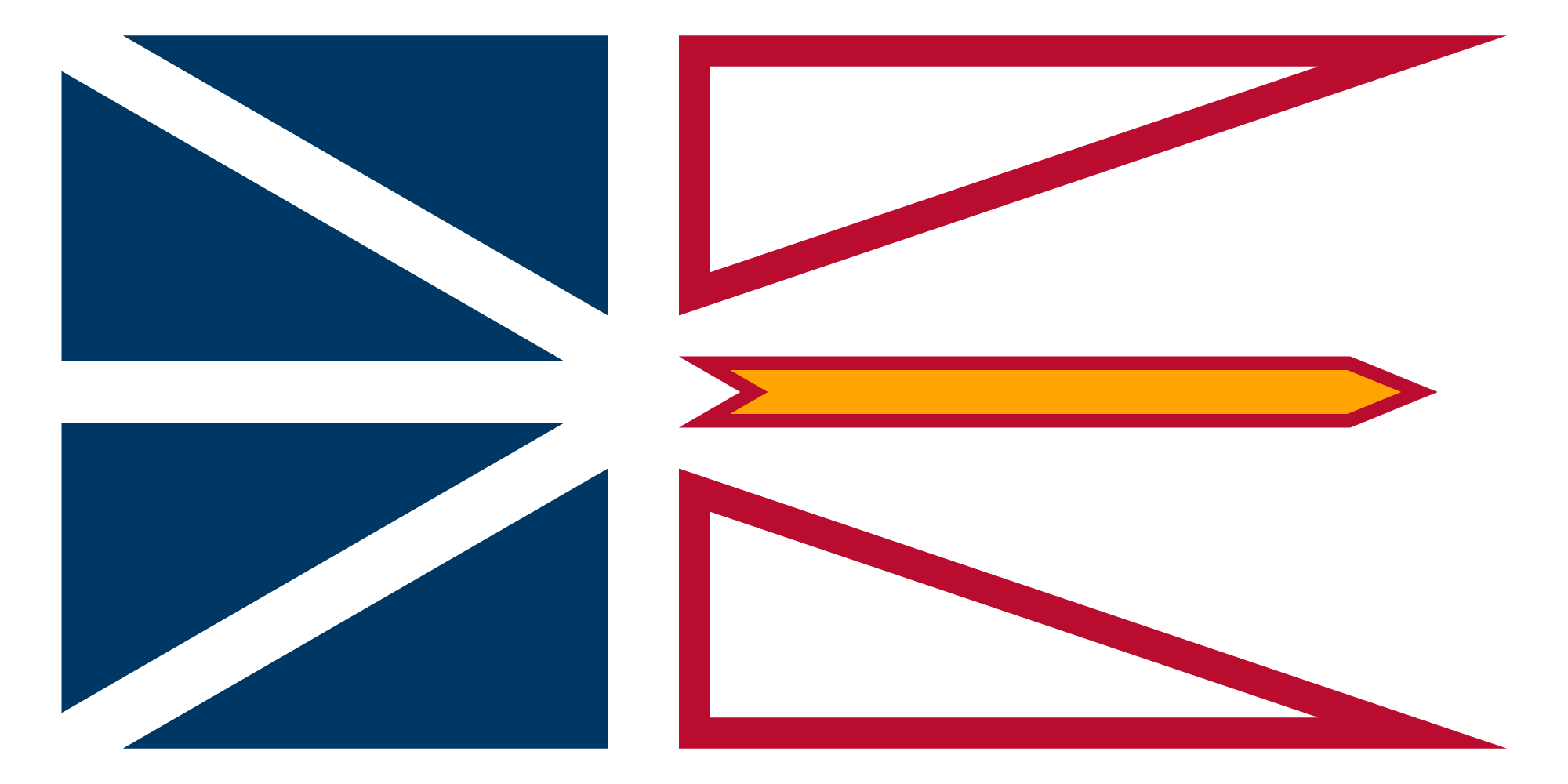Vector Flag Newfoundland and Labrador
Province of Canada
More Info
The flag of Newfoundland and Labrador was introduced in 1980 and was designed by Newfoundland artist Christopher Pratt. The flag design was approved by the House of Assembly of the province of Newfoundland, Canada, on May 28, 1980. It was flown for the first time on Discovery Day, June 24, 1980. The name of the province was changed to Newfoundland and Labrador by an amendment to the constitution of Canada in December 2001. This was at the request of the provincial legislature. The design was chosen due to its broad symbolism. The blue (pantone 2955C) represents the waters of the sea, lakes and rivers; the white represents snow and ice; the red (pantone 200C) represents human effort, and the gold (pantone 137C) symbolizes the confidence the people of Newfoundland and Labrador have in themselves and for the future. The flag design is that of etchings on Beothuk and Innu decorative pendants worn hung from a cord around the neck. Pratt viewed these at the Provincial Museum. With the blue, red and white colours applied, the design has an intentional overall resemblance to the Union Jack, as a reminder of British Isles historic connections. The two red (pantone 200C) triangles represent the two areas of the province, Labrador the continental region and Newfoundland the insular region. The gold (pantone 137C) arrow, according to Pratt, points towards a "brighter future"; the arrow becomes a sword, honouring the sacrifices of Newfoundlanders and Labradorians in military service when the flag is displayed as a vertical banner. The red triangles and the gold arrow form a trident, symbolizing the province's association with the fisheries and other resources of and under the sea.
Source: Wikipedia